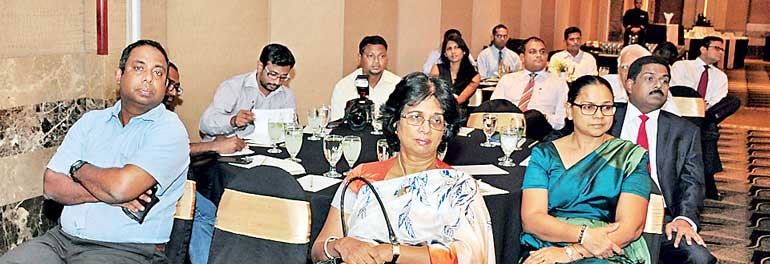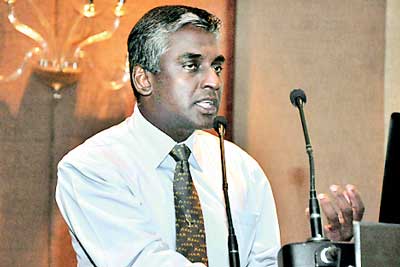
Biodiversity credit accrual system for private sector to be launched- Daily FT – 9 October 2015


By Himal Kotelawala
The private sector can play an integral role in conserving the country’s rich biodiversity by way of a Biodiversity Credit Accrual System, a leading environmentalist and professor in zoology said on Tuesday.
Speaking at a members’ meeting cum CEO forum organised by the Sri Lanka Business and Biodiversity Platform (SLBBP), IUCN (International Union for Conservation of Nature and Natural Resources) Coordinator Prof. Devaka Weerakoon said the SLBBP plans to launch a biodiversity credit accrual system with the aim of assigning a value to conservation activities carried out by various corporate entities.
A bio-accrual register will first be set up, said Prof. Weerakoon, into which biodiversity conservation project owners may enter their conservation initiatives. Credits will then be calculated and assigned accordingly.
The modality of how biodiversity credits are to be redeemed, however, has yet to be developed. According to Prof Weerakoon, other countries that use such an accrual system, such as Australia, use a combination of these methods: using credits for offsets, purchase of credits by philanthropic organisations that seek to invest in biodiversity conservation, purchase by national governments, and the use of credits for tax redemptions. 
To put this idea to the test, said Prof. Weerakoon, the SLBBP in partnership with IUCN, the Forest Conservation Department, the Biodiversity Secretariat, the UNREDD Project and selected private sector partners plans to setup a reforestation project near the Kanneliya Conservation Forest.
Proposed actions include signing a memorandum of understanding with the Forest Department and setting up a ‘bio bank.’ According to Prof. Weerakoon, data gathered from the pilot project area where the biodiversity baseline will be set up, will be used to develop technical guidelines for biodiversity credit calculation.
Selecting and planting suitable native flora, periodic monitoring and evaluation and developing guidelines for redeeming biodiversity are also among the stated goals.
Highlighting the importance of conserving Sri Lanka’s rich biodiversity heritage, Prof. Weerakoon said that the country is home to a usually high concentration of endemic animals.
“Sri Lanka is the 25th largest island in the world. Compared to islands of similar size or even bigger, we have some unique animals that sets us apart. For an island this small, we have a very large population of large animals. 10% of the world’s Asian elephant population lives in Sri Lanka. Other than the elephant, there are other charismatic animals like the sloth bear, leopards, etc.,” he said.
And it’s not restricted to land, he added. “Sri Lanka is located on a continental shelf that descends rapidly. 103 rivers discharging into the ocean, creating very rich food sources, attracting some of the largest – even the largest mammal in the world. Our biodiversity spans from the smallest mammal to the largest,” said Prof. Weerakoon.
Sri Lanka is also known for its very high endemicity, he said. “A vast majority of species found here can be found nowhere else in the world. About 98% of the fresh water crabs found in Sri Lanka, for example, cannot be found anywhere else. We are one of the biodiversity hot spots,” he said.
Sri Lanka’s wet zone is one of the 34 global biodiversity hot spots, pointed out Prof. Weerakoon, adding that there is long term potential for conservation.
“160 million years ago, Sri Lanka was part of the super continent Gondwanaland, located towards the south. We broke away with India, drifted across the Indian ocean and came to our current resting place in South Asia. Sri Lanka and India functioned as a biodiversity route, carrying species from Africa to Asia. So, wee have affinities with both African and Asian species,” he explained.
Over millions of years, Sri Lanka has been connected to and disconnected from India due to rising and falling sea levels, which allowed species to migrate to Sri Lanka and evolve in isolation, he added.
“Sri Lanka has had all the ingredients for a rich biodiversity to evolve,” he said.
The other side of the story is, warned Prof. Weerakoon, is the threat of extinction. “The greatest challenge is how to sustain and conserve Sri Lanka’s rich biodiversity heritage,” he said.
Historically, the responsibility of conserving biodiversity had been mainly entrusted to the state – namely the Wild Life Department, Department of Conversation, etc. But in recent years, there has been a greater involvement of the private sector in biodiversity conservation.
“The private sector can play a huge role. They have the financial strength to get involved more,” he said.
Prof. Weerakoon went on to note several key drivers that would motivate the private sector to get involved:
Generate a competitive advantage in a market where consumers are more concerned about ethical standards of production i.e. eco labels; to make use of existing incentives schemes such as carbon trading; in some cases, such as quarrying and mining companies, compliance with imposed conditions; reduce cost and improve productivity; and an overall improvement of the company’s image. A few might even genuinely care about the environment, he added.
– Pic by Lasantha Kumara
–





